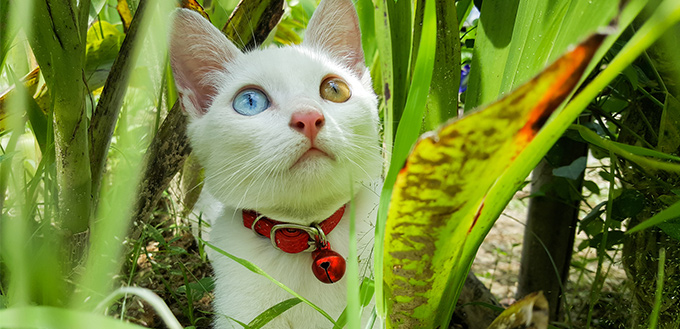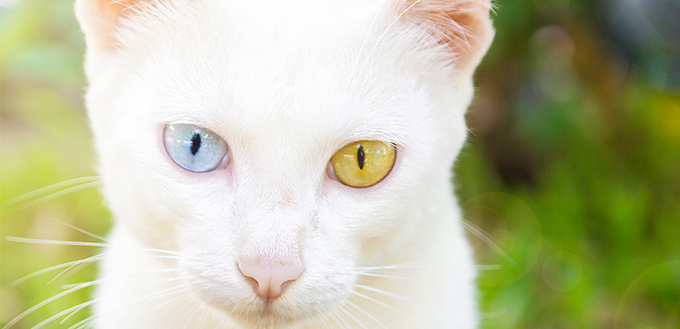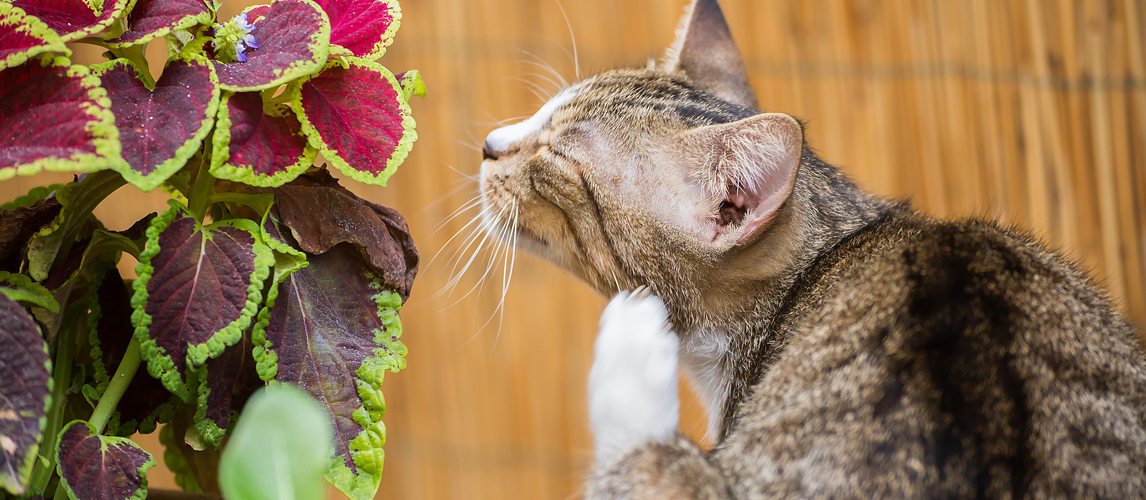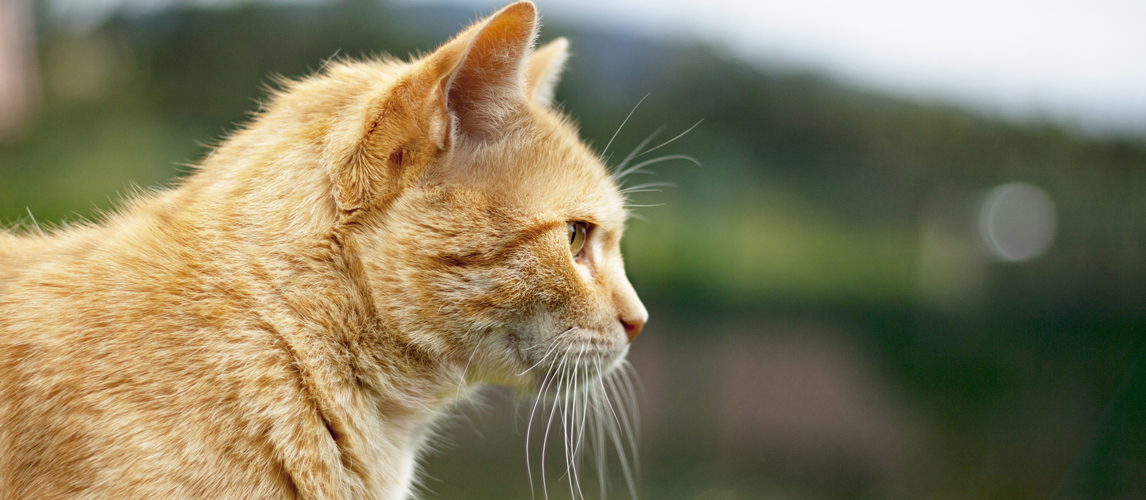Cat are renowned for their elegant grace and beauty, and one particular element that feline fans tend to find most striking is their eyes. It’s certainly not difficult to see why; cat’s eyes are stunning, vibrant, and piercing. They come in a wide array of shades such as silver, yellow, and even pink. But have you ever come across a cat who has two different colored eyes? If you’ve ever wondered why these special little cats’ eyes are mismatched, read on!
So, What’s with the Eyes?
These curious looking kitties actually have a rare condition known as heterochromia iridis, which literally means ‘different colored irises’ in Greek. This condition is also commonly known as odd eye.
Put simply, it means that both eyes are differently colored, most often appearing as blue and green but sometimes can manifest as yellow and brown. There are two different kinds of heterochromia iridis found in cats, the first being complete heterochromia which means both eyes are fully differently colored. The second is known as sectoral heterochromia, meaning just one of their eyes is spilt between two colors. This genetic condition, whilst unusual to look at, is surprisingly common in felines.

What Causes Heterochromia in Cats?
This condition is most frequently seen in white cats or ones that have at least some white fur on their bodies, such as tuxedo and bi-colored cats. The odd eyed defect is rarely seen in cats with darker fur and is extremely uncommon in black cats.
The gene that causes their fur to be white in color is the same one that gives the eyes their unique coloring. It all starts with kittenhood – all kittens are born with blue eyes and their true eye color is not visible until 7 to 12 weeks after their birth. During this period, the pigments, known as melanin, in their eyes begin to shift. When an adult cat is left with their kitten blue eyes, this signifies the absence of melanin.
This is the stage where things get complicated. The gene that creates white fur prevents melanin granules from reaching one of the eyes during the kitten’s development. Because of this obstruction, the melanin develops and shifts into just one eye, resulting in two differently colored irises. In cats who have sectoral heterochromia, the melanin fails to fully spread through one eye, leaving it partially blue.
If you take a picture using a flash of a cat with heterochromia, you might see a reddish tinge in their blue eye. This is due to the fact that while both eyes have a special reflector known as tapetum lucidum that causes the eyes to shine, the layer of melanin in the blue eye removes some of the colors of the light reflected back, resulting in the red hue.
Does Odd Eye Leave a Cat with Any Health Issues?
The short answer to this is no, heterochromia does not itself cause any adverse effects in the health of cats afflicted by the defect. Whilst white cats with two blue eyes carry a higher risk of developing deafness than most, this does not follow for odd eyed cats. In most cases, a cat with heterochromia will live a healthy and happy life with no issues. In fact, 70% of cats with this condition will not have any hearing problems during their life. They also can see with perfect clarity too, so there is no need to have concerns regarding their eyesight.
However, if your cat’s eyes begin to change color during adulthood, you will need to get them checked out at the vets immediately. Changes in a fully mature cat’s eye color can be caused by blood in their eye, iron deposits, uveitis or inflammation.
In addition to this, if you notice your cat’s eyes have turned completely white, don’t simply assume this is heterochromia. White eyes in older cats is very often a symptom of glaucoma and they must be seen by a vet as soon as possible. Acting quickly is crucial in these situations so be sure to book an appointment as soon as you notice the signs.

Is Odd Eye Only Seen in Certain Cat Breeds?
Although this condition is more common in some breeds than others, it can occur in pretty much any cat. In fact, even some dog breeds such as huskies or border collies can also be born with heterochromia. You may have even seen some humans with a similar eye condition! However, unlike kitties, heterochromia is much more rare in humans, occurring in just 1 in 1000 people. Heterochromia in humans is often called Cat Eye.
The cat breeds that are most prone to odd eye are:
- Persian
- Oriental Shorthair
- Turkish Angora
- Turkish Van
- Sphinx
- Khao Manee
- Japanese Bobtail
These beautiful cats are actually highly revered in Turkey – in fact, the country’s government has even taken steps to protect and preserve Turkish Angoras with the odd eyed condition. Since 1917, the Turkish government have been working with the Ankara Zoo on a meticulous breeding program to keep these precious kitties around. They are so fond of them that the brand ambassador for the 2010 FIBA World Tournament was an odd eyed Turkish Van called Baskat! And, according to Islam, the Prophet Muhammad had a cat with heterochromia as a pet. It seems that these unique kitties are loved and admired all over the world in many different cultures!
So next time you come across a feline friend with this intriguing aesthetic, you’ll now be able to educate those around you on the genetic condition. Odd eyed cats are usually just as healthy as ordinary ones and are exceptionally beautiful – so don’t walk by one of these adorable cats as your local shelter, they will make a great new addition to your family and are sure to turn heads! All kitties are unique, cute and lovable in their own way, and these special odd eyed moggies are no exception! Have you ever met an odd eyed cat before?







My Maine Coon has one green eye and one gold eye. Sometimes they are very obvious, others it depends on the light. She has a brown tiger coloring with long hair. No white on her body. Is this eye coloring unusual for her breed?